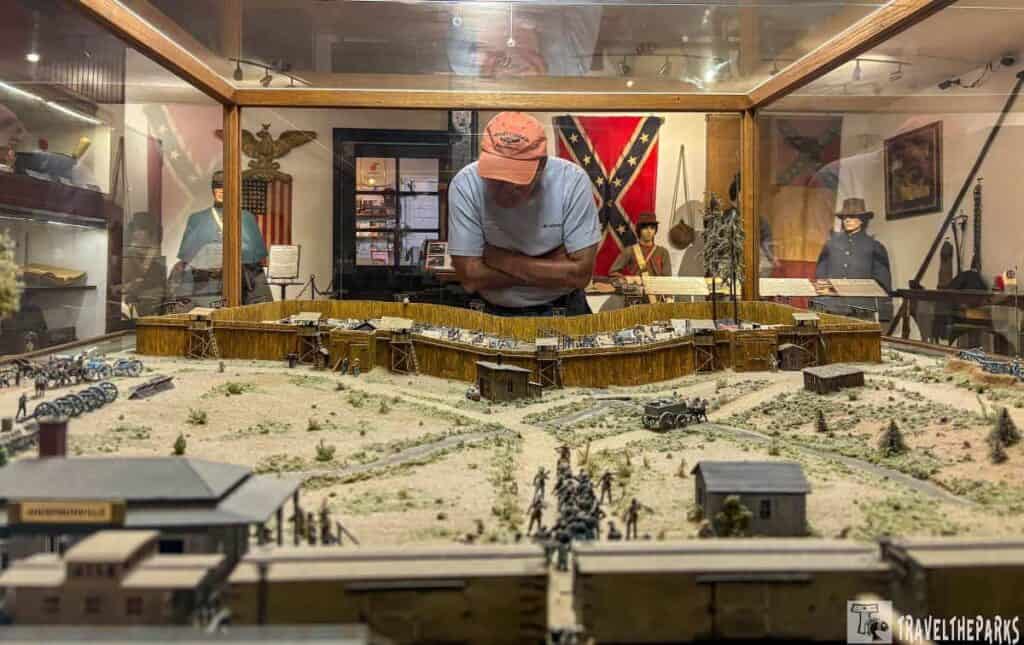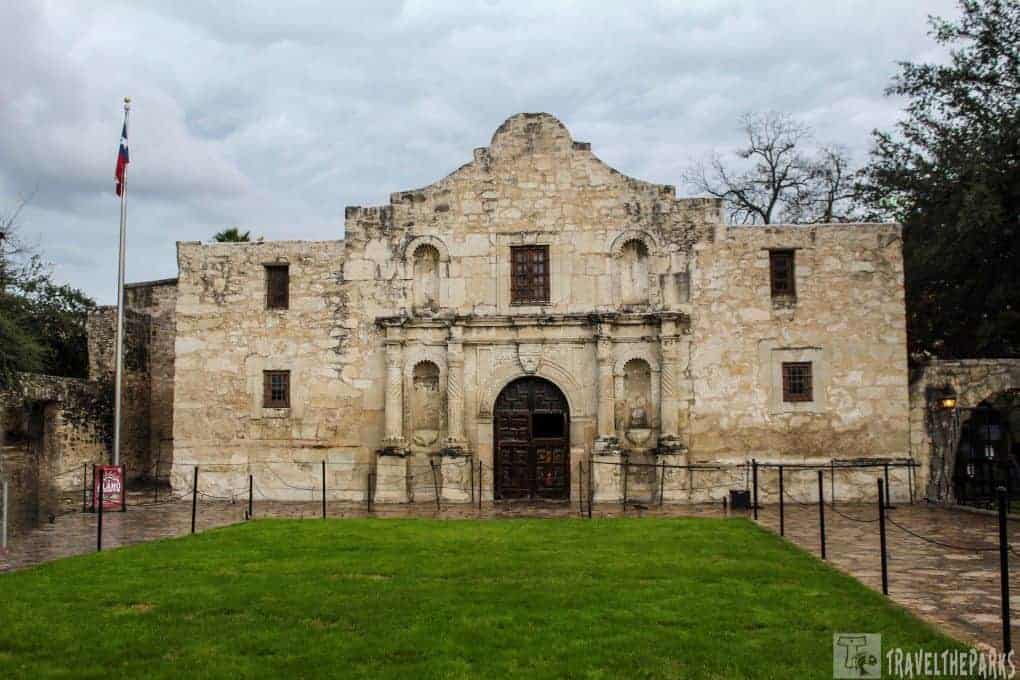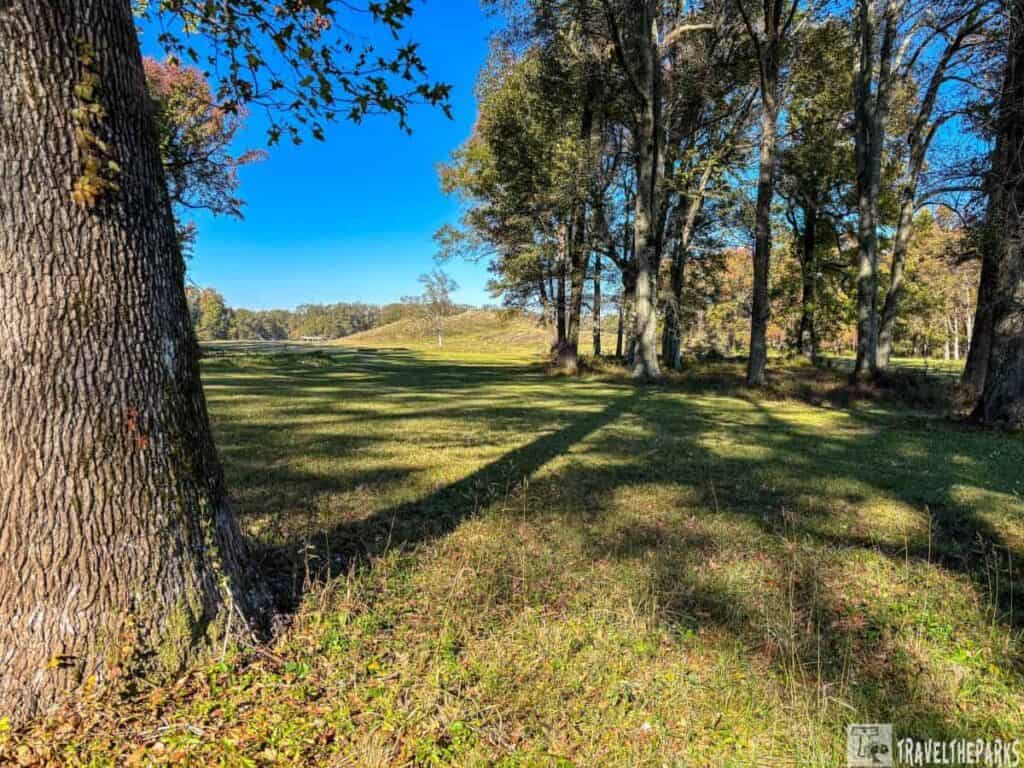Today, we were heading to a place where history came to life in the most profound way—the town of Vicksburg. As we made our way down the winding highways of Mississippi, the air was crisp. The horizon stretched wide before us, filled with the beauty of rolling hills and small towns. We had always loved taking road trips, but this journey felt different. Discovering Vicksburg’s interesting Civil War history thrilled us; we explored key battle sites, historic landmarks, and museums that bring this pivotal chapter of American history to life.
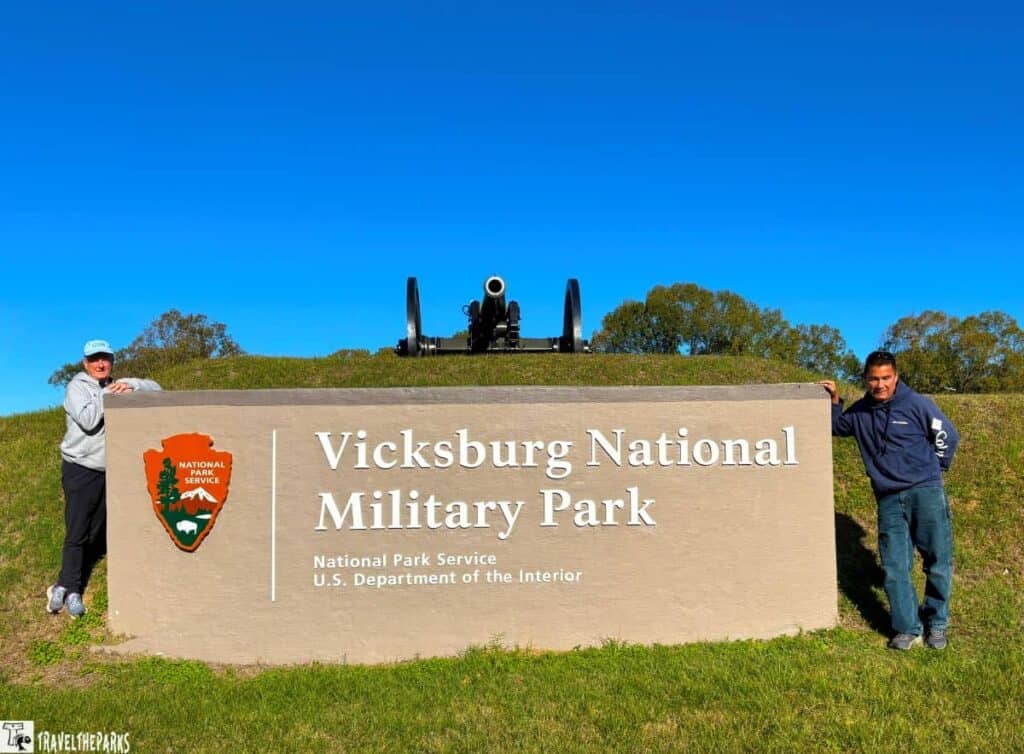
Vicksburg was anything but a passing dot on the map, serving for centuries as one of the critical points in the Civil War. Vicksburg is a place where past and present blend without borders, where the landscape still reveals traces of war. While Gettysburg often steals the spotlight, understanding the siege of Vicksburg is crucial to grasping the war’s ultimate outcome. For the most part, anyone interested in American history should not miss this place.
Our goal was to fully immerse ourselves in Vicksburg’s Civil War history, and the best way to do this, we quickly discovered, was by taking a scenic drive through the Vicksburg National Military Park. Here’s how we experienced it.
This post may contain affiliate links, meaning if you purchase something through one of these links, we may earn a small commission at no extra cost to you! Read the full disclosure policy here.

Table of Contents
Things to Know Before You Go to Vicksburg National Military Park:
- Hours: The Vicksburg National Military Park is open every day of the year (except for Christmas Day) from 8:00 AM to 5:00 PM.
- Entry Fee: The general entry fee for adults is $20 per vehicle, but there may be discounts for over 62 years, veterans, and others. Check the park’s official website for any updated pricing or special passes.
- Pets are allowed in the park, including on the driving tour and trails, but they must be on a leash at all times. The leash must be no longer than 6 feet.
- Walking Trails: If you want to explore the park on foot, there are several walking trails along the route.
- Visitor Center: The Vicksburg National Military Park Visitor Center is at the entrance and provides a great starting point. Here, you can pick up maps, get information about the park, and see exhibits related to the Siege of Vicksburg and the Civil War.
- Driving Tour: The park features a 16-mile driving tour that takes you through the battlefield with stops at key sites, monuments, and memorials. We took our 22-foot travel trailer and had no issues with parking in early December.
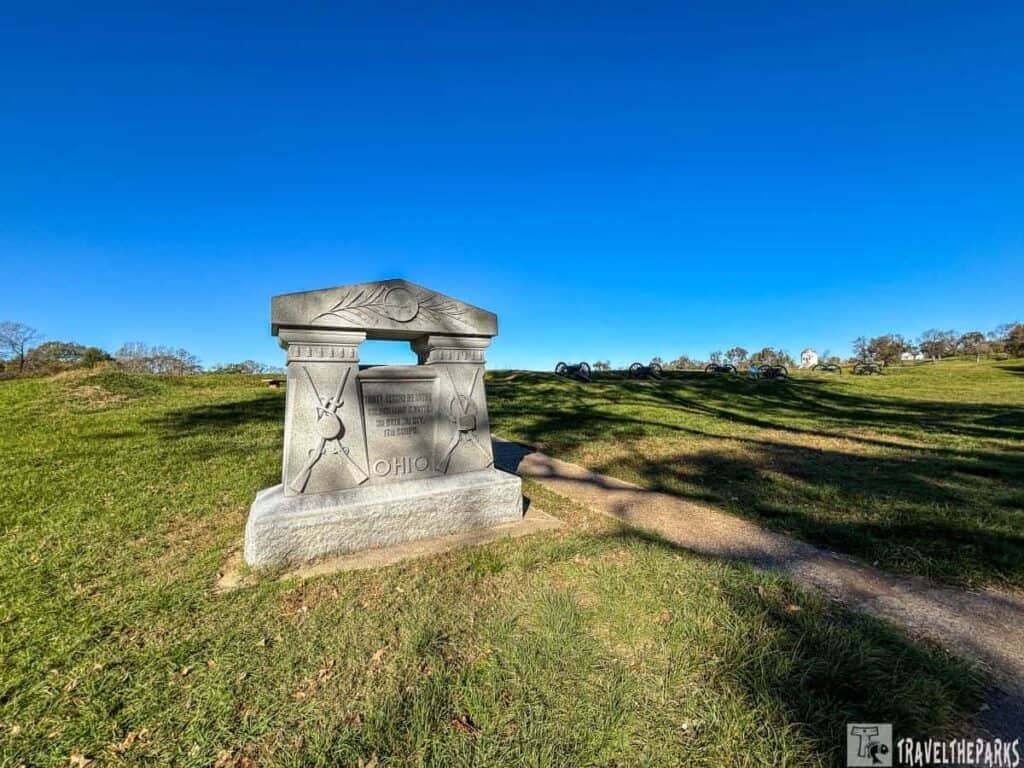
How to Get to Vicksburg National Military Park
- From Jackson, MS (Approx. 45 miles / 1 hour drive): Take Interstate 20 West (I-20 W) from downtown Jackson. Continue on I-20 W for about 45 miles. Take the Vicksburg Exit (Exit 4) toward Washington Street. Turn left onto Washington Street (also Highway 61 North) and follow the road to the park entrance. Turn left onto Pemberton Avenue, which will lead directly to the park.
- From New Orleans, LA (Approx. 170 miles / 3 hours drive): Get on Interstate 10 East (I-10 E) from downtown New Orleans. Take Interstate 55 North (I-55 N) to Interstate 20 East (I-20 E). Follow I-20 E for about 130 miles until you reach the Vicksburg Exit (Exit 4). Follow the exit ramp and turn right onto Washington Street (Highway 61 N). Turn left onto Pemberton Avenue, which will lead you directly into the Vicksburg National Military Park.
- From Memphis, TN (Approx. 190 miles / 3.5 hours drive): Take Interstate 55 South (I-55 S) from downtown Memphis. Merge onto Interstate 40 West (I-40 W) and then continue on I-40 W until you reach Interstate 20 East (I-20 E) in Mississippi. Follow I-20 E to the Vicksburg Exit (Exit 4). Turn right onto Washington Street (Highway 61 N) and then left onto Pemberton Avenue, following the signs to the park entrance.
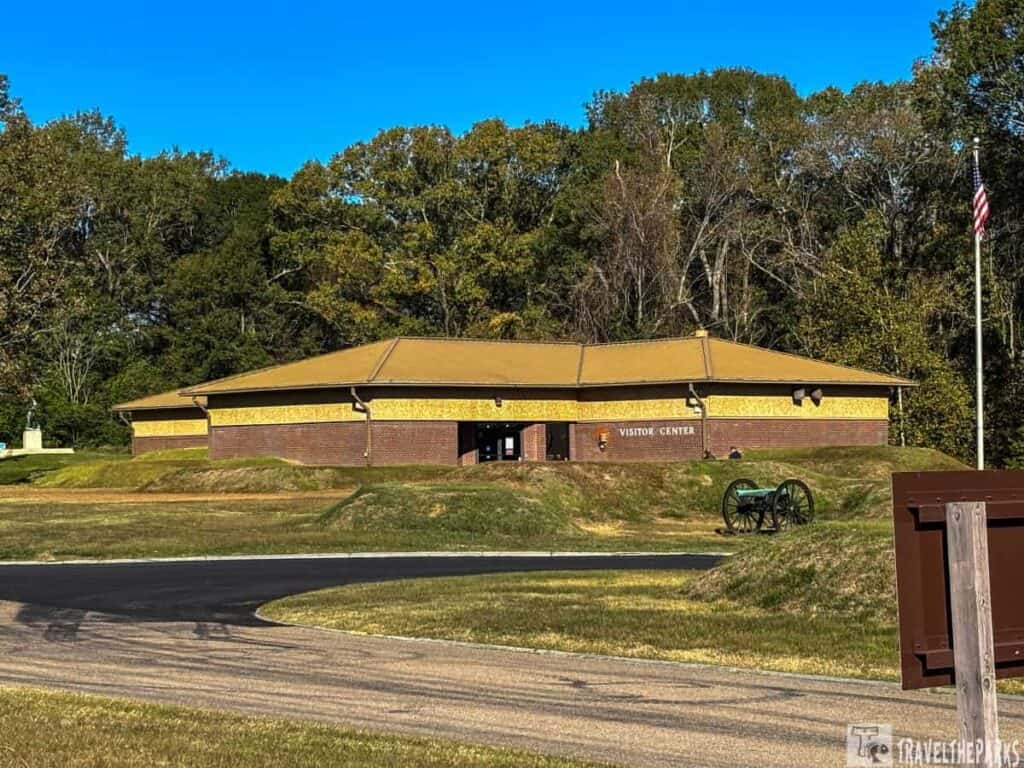
Starting Our Journey: The Vicksburg National Military Park Visitor Center
On our road trip through the South, we started the day at the Vicksburg National Military Park Visitor Center, getting there right when it opened. It was the ideal way to start our adventure through the battlefield history. We watched a short movie in the theater that made the Siege of Vicksburg feel real. This important battle took place from May 18 to July 4, 1863, and it marked a key moment in the Civil War. The movie made me understand how important this moment was when the Union forces, led by General Ulysses S. Grant, fought. Grant surrounded the Confederate stronghold of Vicksburg, successfully dividing the South in half. It was a history you could feel.
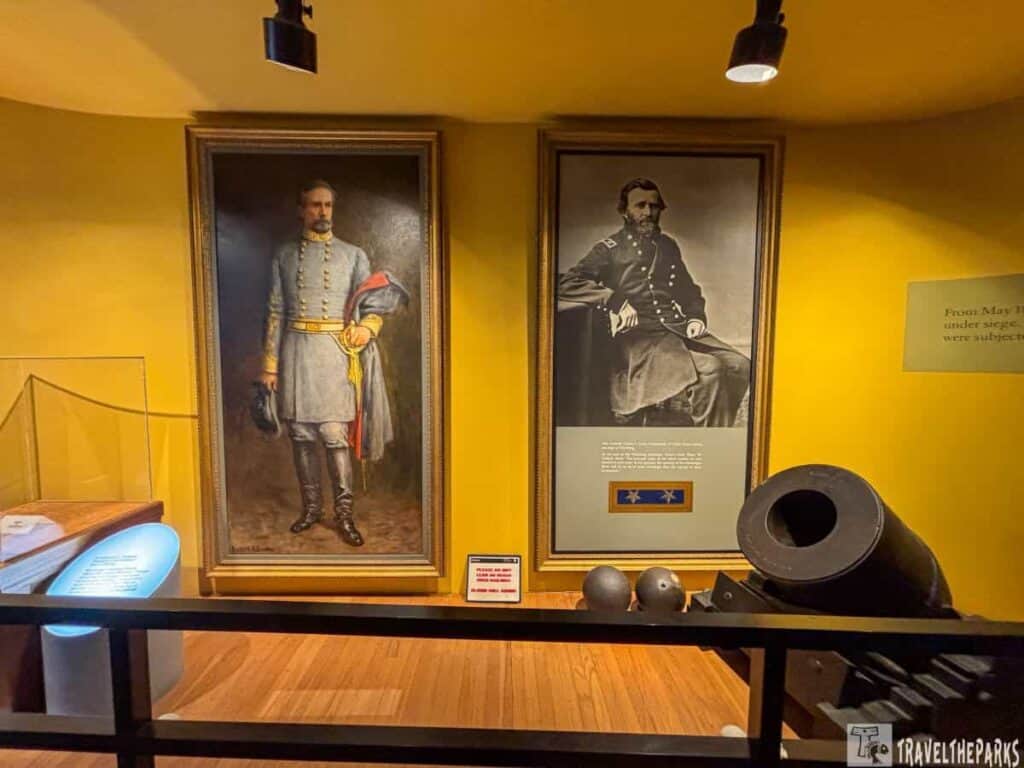
First, we picked up a map of the park with a self-guided tour route. This park has over 1,300 monuments, markers, and plaques. Each of them has some sort of story that involves bravery, sacrifice, and strategy. We were ready to step back in time.
NOTE: With over 1,300 monuments, Vicksburg National Military Park can be overwhelming to visit in a single day. However, by focusing on a few key highlights, you can experience the essence of the park while making the most of your time.
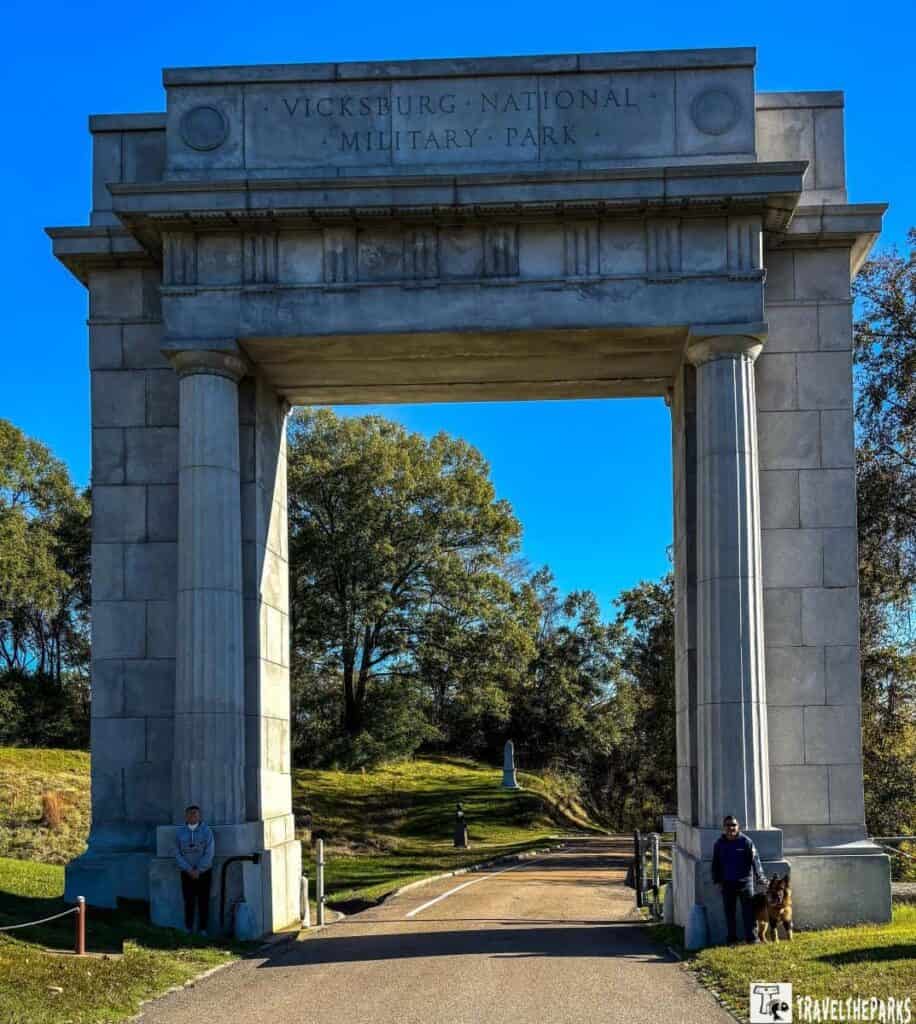
The Scenic Drive: A Journey Through History Vicksburg Military Park
We hopped back into our truck and began the loop around the park. Did I mention we were towing a 22-foot travel trailer as well? The scenic drive through Vicksburg National Military Park is 16-miles with 15 different stops. Even with the trailer, we were determined to make the most of it, stopping at key points to soak in this timeless place.
NOTE: Download the NPS App or Vicksburg Battle App® before taking your self-guided tour. This way, you can take advantage of the audio tour narration for each stop along the route.

Along the tour road in Vicksburg National Military Park, you’ll find more than 1,300 memorials and monuments honoring the soldiers of other states who fought in the campaign. Each state memorial pays tribute to the specific regiments that battled there.

Just before reaching Station One, we stopped to admire the Minnesota Monument. This striking memorial stands out among the many war memorials in the park, honoring the brave soldiers from Minnesota who fought during the Siege of Vicksburg and the Vicksburg Campaign. The monument’s detailed design and historical significance capture the attention of visitors, as each small monument in the park tells a part of the larger story of the pivotal Civil War battle.
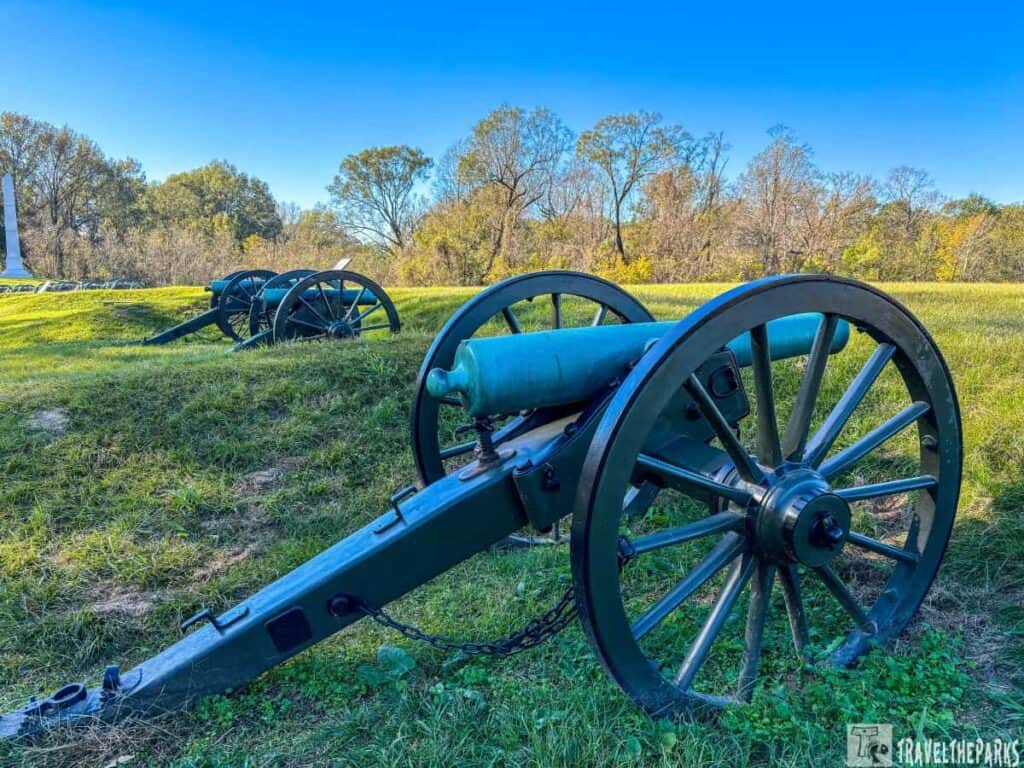
Station 1: Battery De Golyer
This battery played an important part in the Siege of Vicksburg in 1863, one of the turning points of the American Civil War. They named the battery after its commanding officer, Captain François De Golyer. He positioned his battery up on high ground to overlook and help defend the Mississippi River side of the city against Union forces. We spent a bit of time exploring the preserved earthworks and gun placements. It gave us a glimpse into the harsh conditions and tactical importance of the Vicksburg defenses.

We could see that the batteries here had heavy cannons and siege guns that pounded Confederate defenses, laying down barrages of extraordinary power and causing immense damage. This artillery not only aimed to destroy fortifications but also sought to weaken the spirit of the Confederate troops. Continuous bombardment was one factor that eroded morale among the defenders. By July 4, 1863, these tactics led to the surrender of Vicksburg—a very important victory in the context of the Civil War.
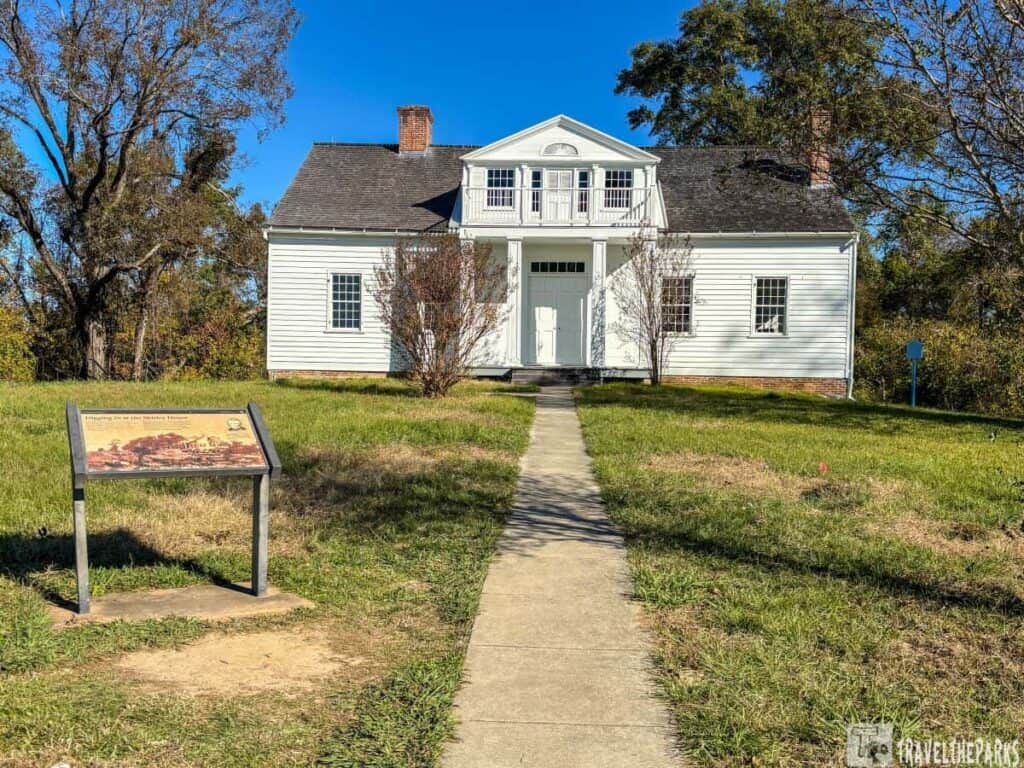
Station 2: Shirley House
First, we went to see the Shirley House, which had been the residence of a Confederate officer and his family. The only wartime structure remaining in the park, it still stands. This home represents the life of civilians during the siege. The structure is simple yet striking, and as we walked on the grounds, it was almost possible to hear the echoes of soldiers’ footsteps and the distant rumble of cannons. A reminder that war touches not only soldiers but also the people who live through it.
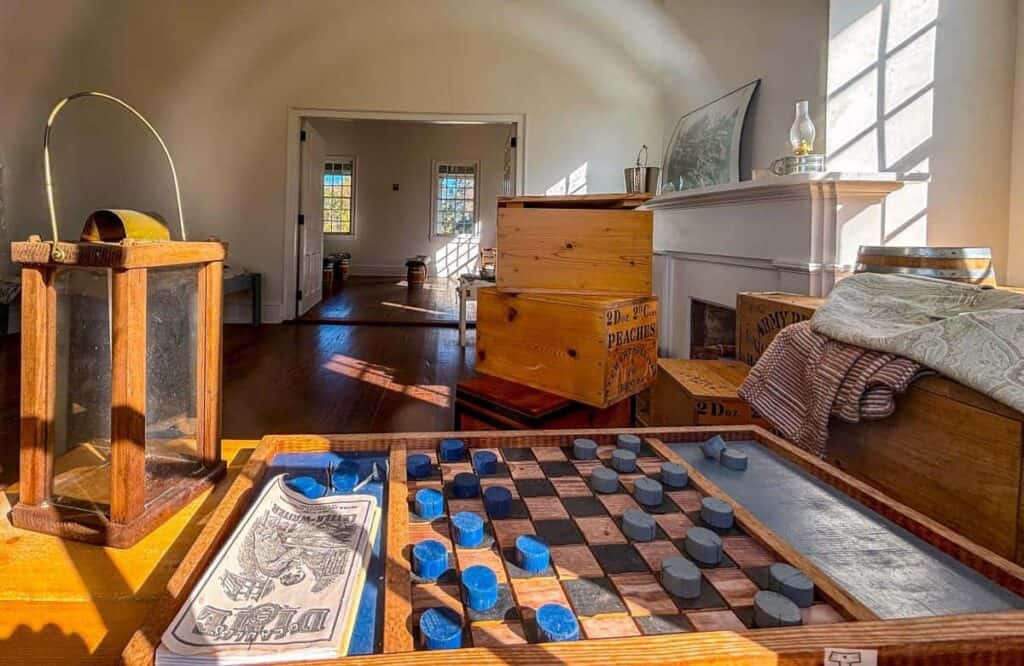
Today, Shirley House is an interpretive site that affords us a view backward in time. Restored with precision to the way it looked during the Siege of Vicksburg in 1863, the house speaks of living conditions and quality of life during those rough siege days. Exhibits and information displays throughout the house provide a history of the Shirley family, civilians during the Civil War, and the hardships they faced during the long months of bombardment and isolation. Visitors to the Shirley House can step back in time into the intimate, personal side of history, capturing one of the Civil War’s most pivotal campaigns.

The Grand Illinois Memorial
I think the Illinois Memorial is probably one of the most memorable monuments within the Vicksburg National Military Park. On April 29, 1906, the park inaugurated the memorial to honor the Illinois soldiers who valiantly fought and died during the Siege of Vicksburg. The state of Illinois was highly involved in the success at Vicksburg on the part of the Union. This memorial commemorates the contribution of the state to this campaign.

The Illinois Memorial stands as a striking tribute made of Indiana limestone. Its domed rotunda features a large bronze statue of a Union soldier at the entrance. The monument showcases a series of columns and intricate carvings. Inscriptions honor the Illinois regiments, including infantry, cavalry, and artillery units, that fought valiantly in the battle. Inside the rotunda, plaques list the names of Illinois soldiers killed or wounded. Thus ensuring remembrance of their sacrifices. This memorial preserves the legacy of those who served in the conflict.

Station 3: Third Louisiana Redan
The redoubt and surrounding earthworks provide a clear visual representation of the types of fortifications used during the siege. It stands as a testament to the ingenuity of Confederate engineering. General John C. Pemberton, commander of the Confederate forces, built the Third Louisiana Redan as part of their defenses. This redan represented very important strategic support in the repelling of Union assaults throughout the Second Battle of Fort Vicksburg, from May 18 to July 4, 1863.
As part of their strategy, Union forces under the command of General Ulysses S. Grant dug tunnels beneath the Confederate fortifications, including the Third Louisiana Redan. This tactic, known as mining, aimed at planting explosives under the earthworks. Union miners worked diligently to create these tunnels, placing large amounts of gunpowder to breach the Confederate defenses. The goal was to weaken the lines around Vicksburg. On June 25, 1863, the Union detonated a massive charge under the Third Louisiana Redan. The resulting explosion created a significant gap in the defenses, causing extensive damage. However, despite the damage to the defenses, the Confederate defenders were able to temporarily regroup and continue to resist the Union advance, holding their positions for several more days.

Although the explosion at the Third Louisiana Redan caused some damage and casualties, it was part of a broader campaign of gradual Union pressure. The Union forces had surrounded the city and were applying constant artillery bombardment, digging siege trenches, and launching mining operations to undermine Confederate defenses. This intense, coordinated effort eventually led to the surrender of Vicksburg on July 4, 1863.

Station 4: Ransom’s Gun Path
Park Ransom’s Gun Path denotes the trajectory used by Union artillery to arrange cannons and mortar batteries around the periphery of the city. To intensify the siege, Union artillery deliberately positioned these installations to shell Confederate strongholds within Vicksburg. Brigadier General Ransom oversaw one of the Union divisions engaged in the siege, and his unit was instrumental in the formation of a vital artillery line that was crucial to the broader Union strategy. This location is important for comprehending the artillery maneuvers and the contribution of Union artillery in diminishing Confederate fortifications throughout the campaign, which ultimately culminated in the capitulation of Vicksburg on July 4, 1863.
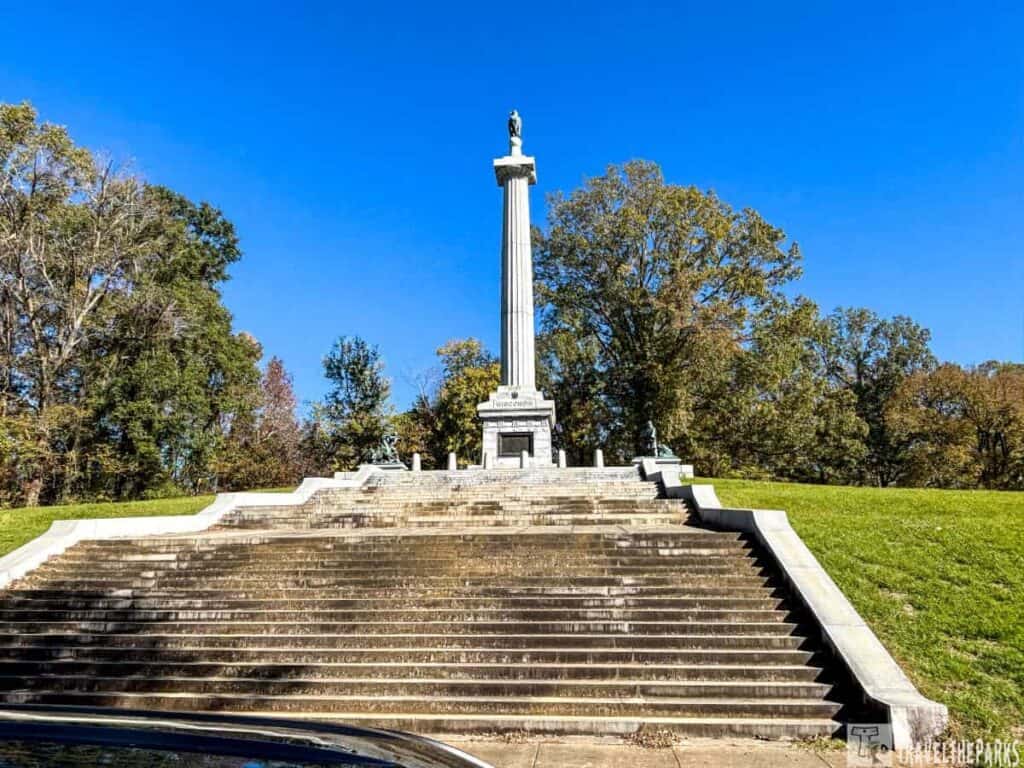
Station 5: Stockade Redan Attack
This redan was a key strong point for the Confederacy, one that was integrally part of an extensive array of earthen works and fortifications around Vicksburg; it was in the southeastern part of the city, and as such, this became one of the prime focal points of resistance during the siege.
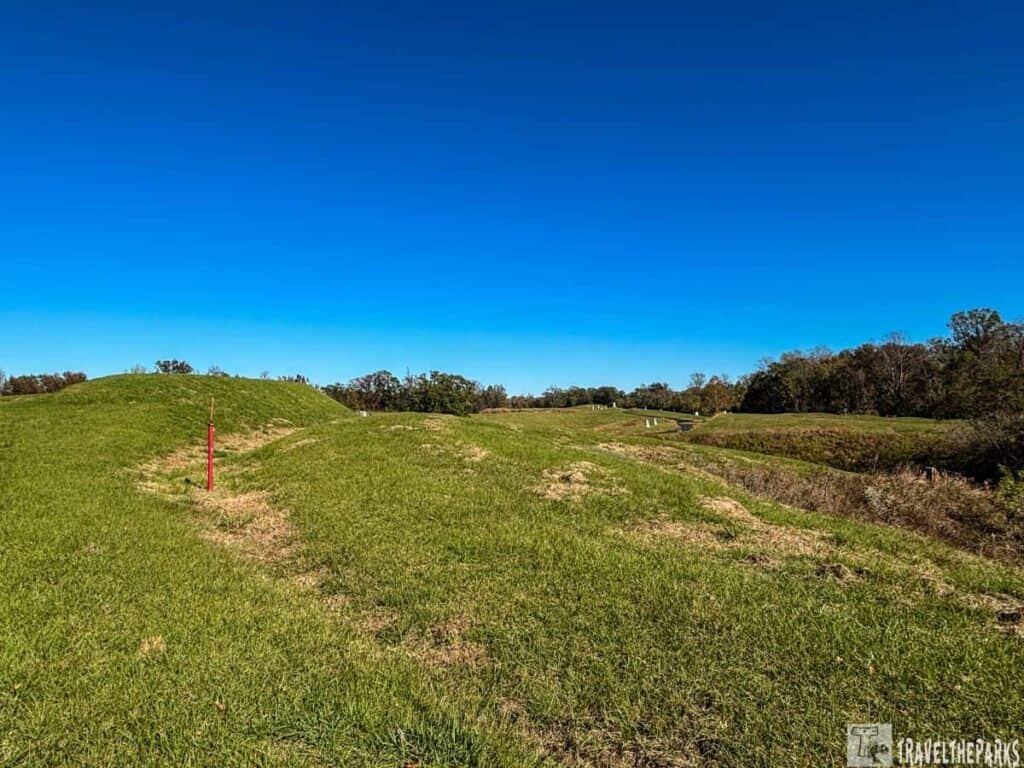
On May 22, 1863, Union troops launched an attack on the Stockade Redan, hoping to break the Confederate lines. This engagement was one of many failed attempts by Union forces against the formidable fortifications surrounding Vicksburg. The Confederate troops, commanded by General John C. Pemberton, fiercely resisted these assaults.
Although valor and determination characterized the Union soldiers, the Stockade Redan remained a formidable bastion to resist the Union attack and inflict heavy casualties upon them. The reverse proved to be a critical juncture in the siege and epitomized the difficulties that were going to be faced in the perennial pursuit of dismantling the deeply entrenched Confederate positions.
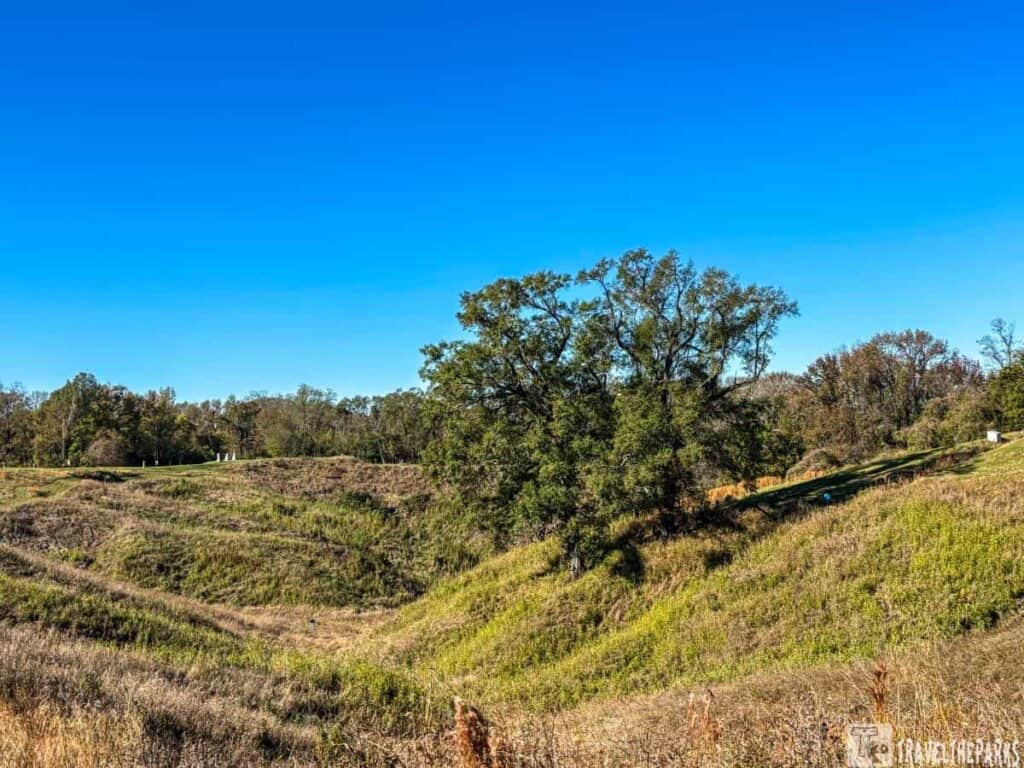
Station 6: Thayer’s Approach
The Siege of Vicksburg was a pivotal Union victory in the Civil War, and Thayer’s Approach played a key role in this success. As part of the larger siege strategy, Thayer’s regiment exemplified the Union’s methodical and determined efforts to wear down Confederate defenses and force a surrender. Their actions underscore the strategic brilliance that enabled the Union to gain control of the Mississippi River – a turning point in the war. Colonel John M. Thayer and his troops demonstrated the grit and tactical mastery that led to one of the most decisive Union triumphs.
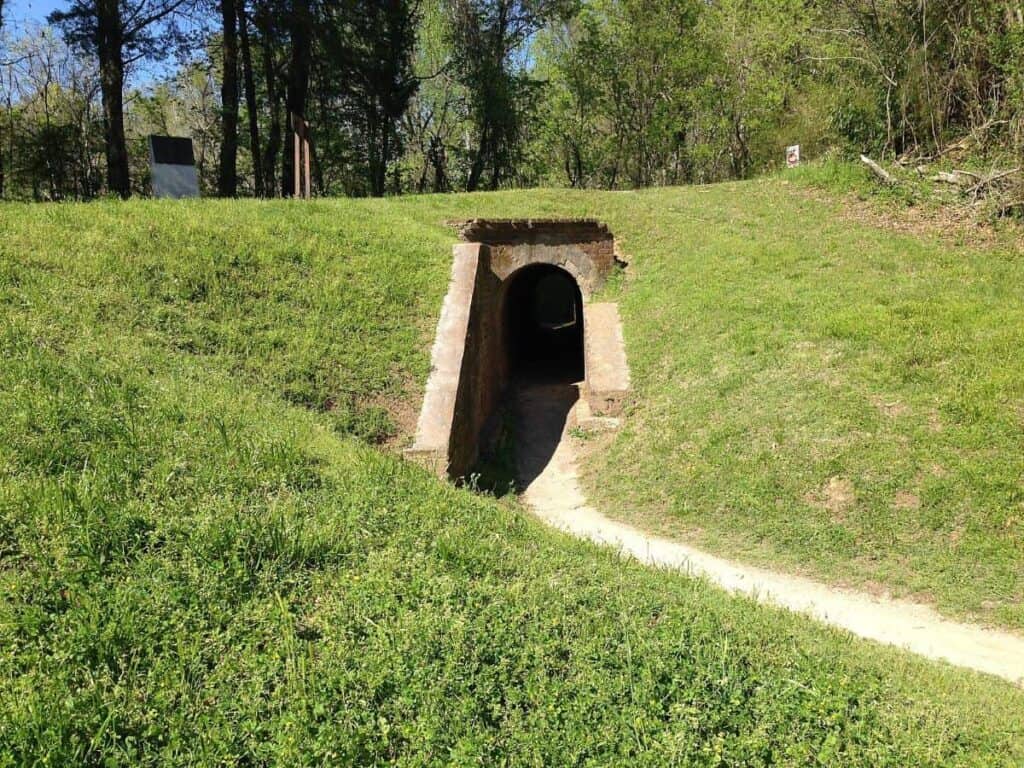
The remnants of the excavation of a short tunnel through the ridgeline allowed Union forces, particularly Colonel John M. Thayer’s men, to begin digging their approach trench without exposure to the deadly Confederate artillery and rifle fire. This strategic maneuver allowed Thayer’s men to dig their approach trench, which was an essential part of the siege. The tunnel operation exemplified siege engineering at its finest, enabling the Union troops to advance toward Confederate positions under the cover of darkness without suffering heavy casualties from enemy fire.

Stop 7: Battery Selfridge
While Union Army artillerymen manned many of the artillery positions during the Siege of Vicksburg. The Union Navy, rather than the Army, uniquely manned Battery Selfridge with naval guns, unlike other batteries.
As part of the Union siege and blockade, the Union Navy played a crucial role in supporting General Ulysses S. Grant’s campaign at Vicksburg. The navy not only engaged in a naval combat on the Mississippi River but also provided artillery support for the Army of the Tennessee.
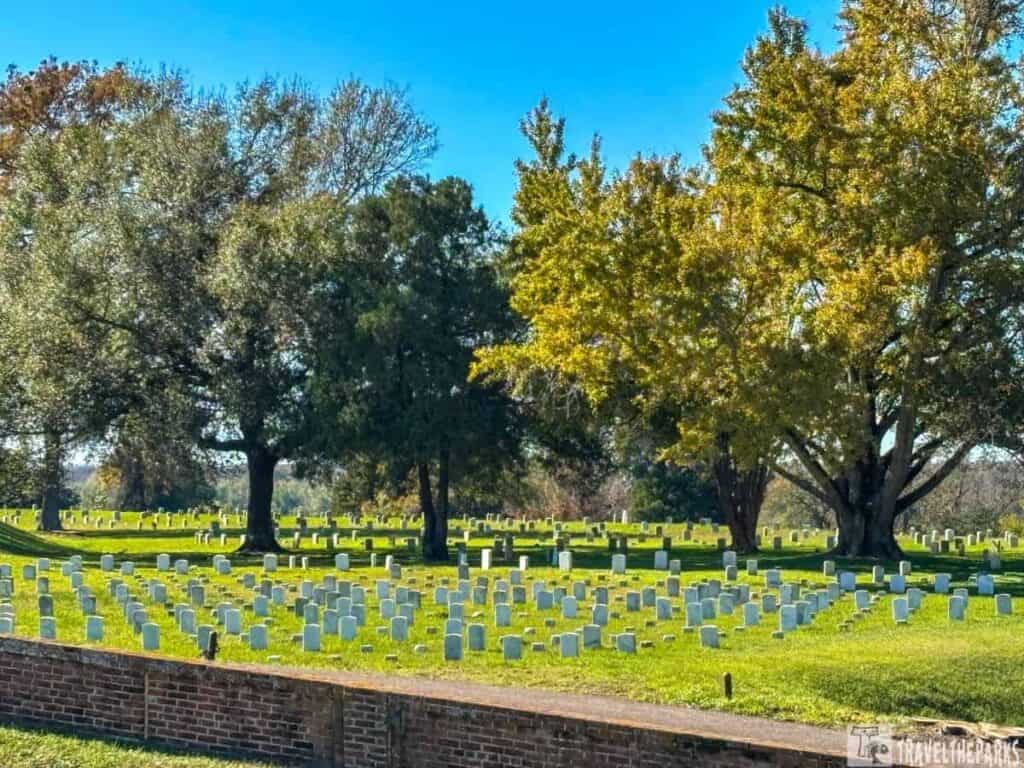
Stop 8: Vicksburg National Cemetery
We continued on to the Vicksburg National Cemetery, the final resting place for more than 17,000 Union soldiers. The graveyard is hauntingly beautiful and tranquil, with rows of white marble headstones stretching as far as the eye can see. It’s almost impossible to grasp the immense scale of such loss at once. Yet standing there, a profound sense of respect for those who sacrificed for the cause is undeniable. Above all, the carefully designed quiet spaces invite a sober, reflective pause to contemplate the sacrifices of the Civil War.
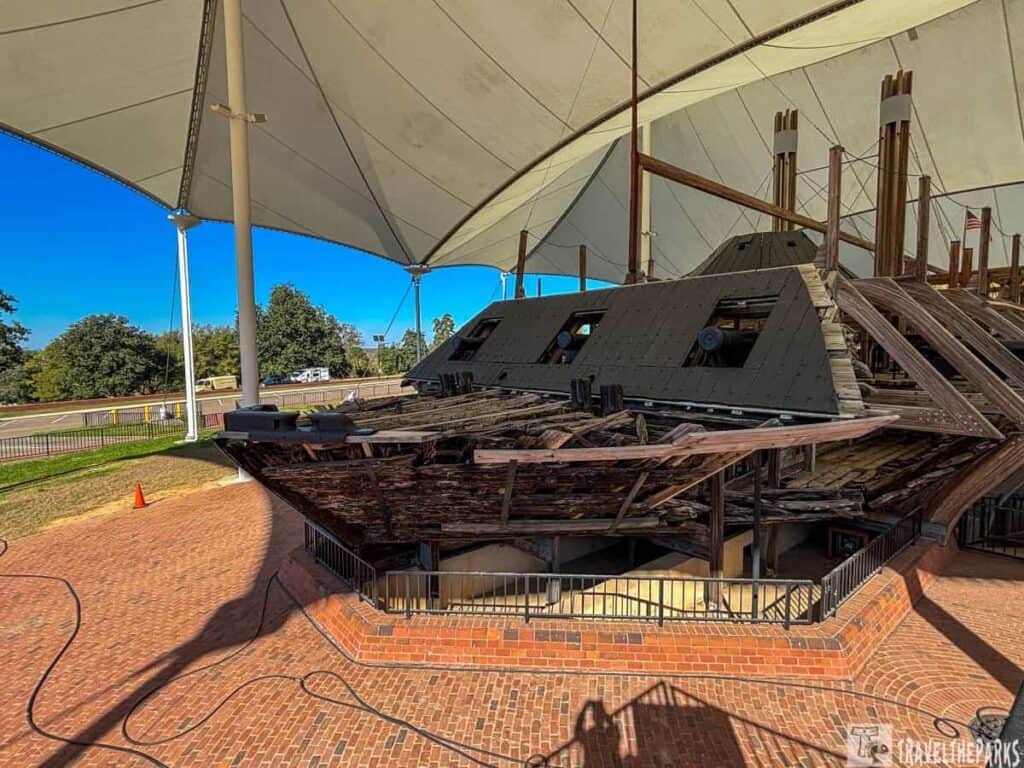
USS Cairo Museum and the Ironclad Gunboat
Next, we went to the most impressive feature of the park, the USS Cairo Museum. This was a stop I had been waiting to see, and it did not disappoint. They built the USS Cairo Museum around the remains of the USS Cairo, a Union ironclad gunboat that a Confederate torpedo sank during the Vicksburg campaign. The fully restored boat, now under a climate-controlled building, astonished us. Inside, we saw everything from the living quarters of the crew to the huge cannons, showing what life was like aboard the ironclad. It really put into perspective with the remains of the boat just how brutal naval warfare could be during the Civil War.

Stop 9: Fort Hill
The trek to Fort Hill proved particularly illuminating for understanding the terrain and challenges faced by both Union and Confederate forces during the prolonged siege. From the hilltop, we could see the mighty Mississippi River, a strategic focal point throughout the Civil War. It’s hard to overstate the river’s pivotal role in the siege. As we stood overlooking the winding waterway below, we tried to imagine what it must have been like for the soldiers, cut off from supplies and facing an unrelenting enemy.
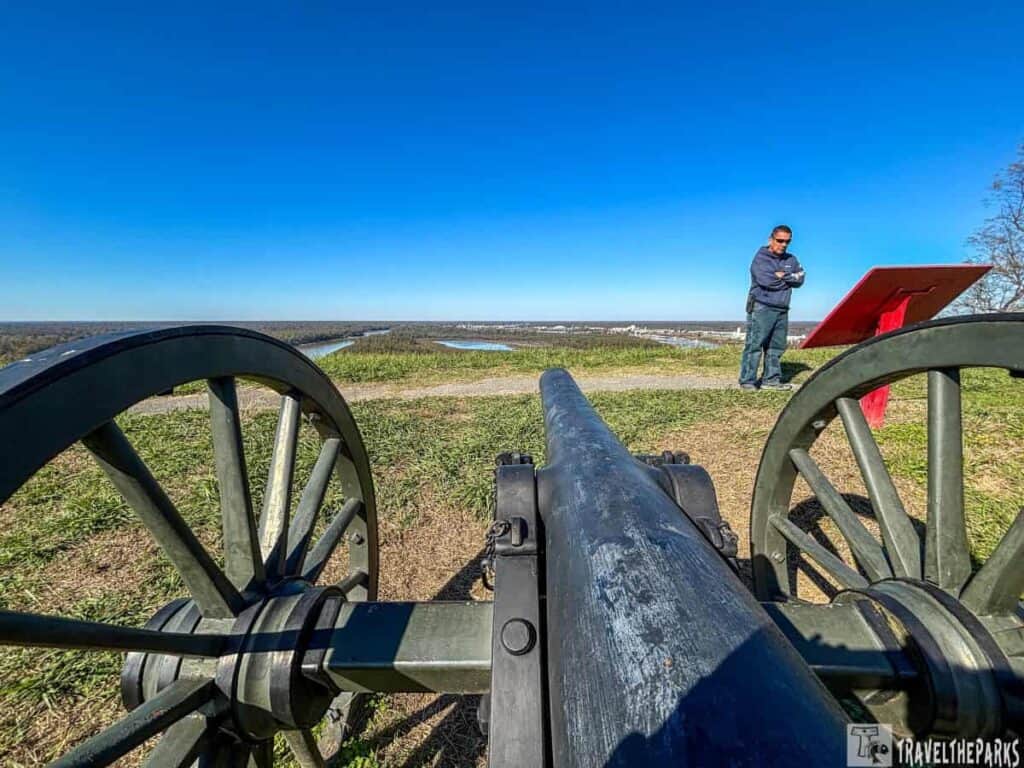
Interpretive markers provided vivid details about Fort Hill’s role, explaining how the Confederate forces leveraged the high ground to their advantage. These markers also shed light on the siege tactics employed by both sides and the daily hardships endured by the soldiers.

Station 10: Stockade Redan
Here, General John C. Pemberton led Confederate forces in building a strong network of trenches and earthworks during the siege. The Stockade Redan was a key part of these defenses. Positioned on high ground, it allowed Confederate troops to fire effectively on advancing Union soldiers. This strategic advantage helped the defenders maintain their position against relentless attacks. The complexity of the defenses demonstrated the Confederates’ determination to hold their ground.
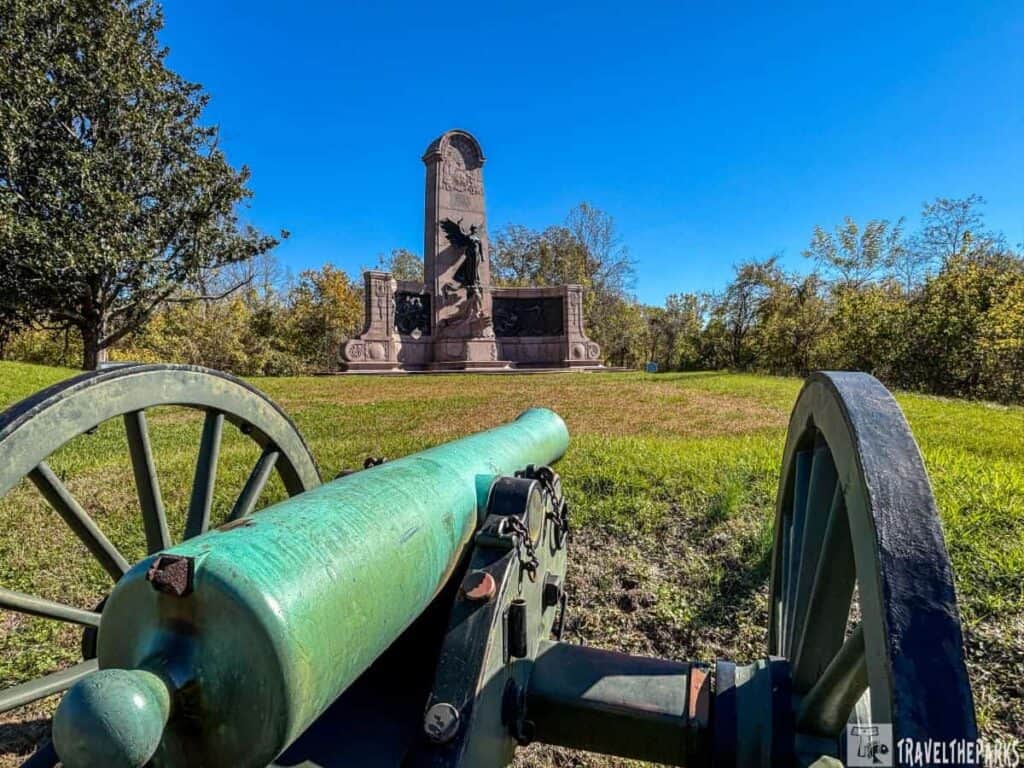
Station 11: Great Redoubt
The Great Redoubt is a powerful reminder of the Siege of Vicksburg. This location played a crucial role in the Civil War as a Confederate stronghold. Intense battles and strategic moves unfolded here, ultimately leading to the Union’s victory. Visitors can walk the grounds and feel the weight of history. This site gave us logical insight into the tactics used and the bravery of soldiers on both sides. For anyone interested in the Civil War, the Great Redoubt is essential. It connects visitors to the military stories carved into its walls.
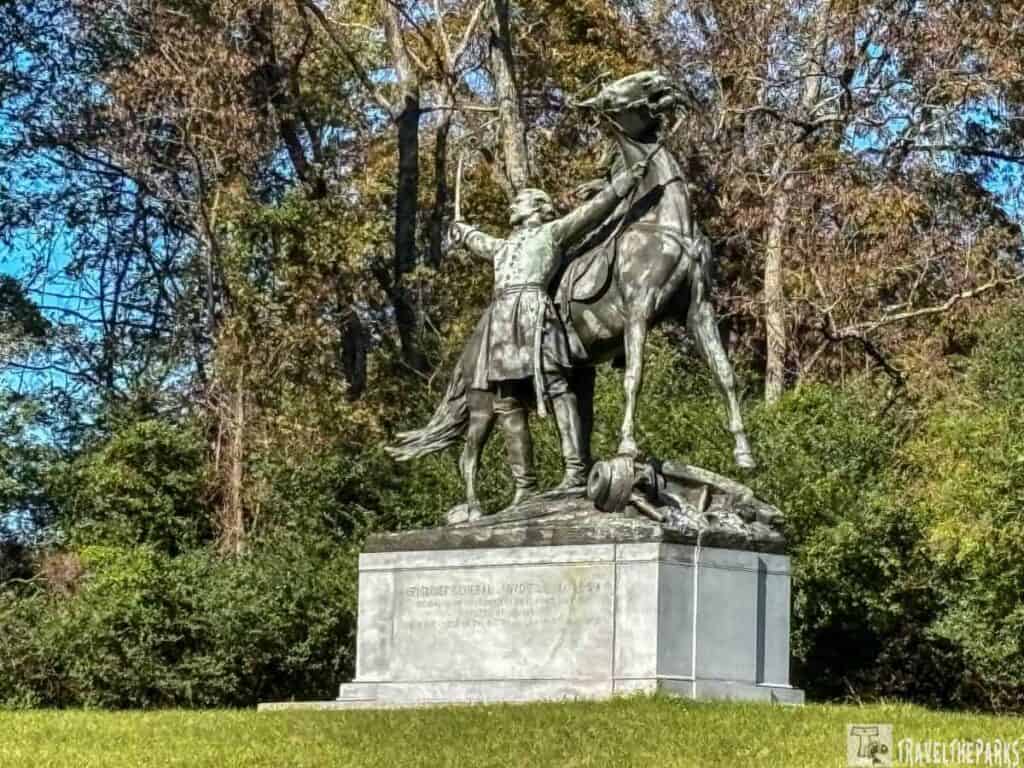
The memorial to Brigadier General Lloyd Tilghman at Vicksburg National Military Park is indeed an interesting and somewhat unexpected addition, given that Tilghman was killed at the Battle of Champion’s Hill, not during the Siege of Vicksburg itself. However, its placement in the park speaks to the broader context of the Vicksburg Campaign and the importance of the battlefield preservation efforts that followed the war.

Station 12: Second Texas Lunette
The Second Texas Lunette, a historic site perched on high ground, offers visitors a sweeping view of the Vicksburg battlefield. Interpretive markers throughout the site explain its pivotal role in the Confederate defense during the siege of Vicksburg. Though the lunette was part of a larger strategy to protect the city, the Union’s relentless blockade severely limited Confederate supplies, ultimately isolating their forces. As conditions grew increasingly dire, General John C. Pemberton had no choice but to surrender on July 4, 1863 – a turning point that gave the Union control of the Mississippi River and significantly impacted the war’s outcome.

Station 13: Railroad Redoubt
The strategically located Railroad Redoubt guarded the vital Vicksburg and Jackson Railroad, a crucial supply line for both Confederate and Union forces. Designed in a semicircular shape, the earthworks provided defenders protection from Union artillery and positioned their own guns to fire on approaching enemies. Like other Confederate fortifications, the redoubt combined trenches, bastions, and rifle pits to bolster its defenses. Interpretive markers on-site explain the redoubt’s strategic importance in controlling this key transportation link.
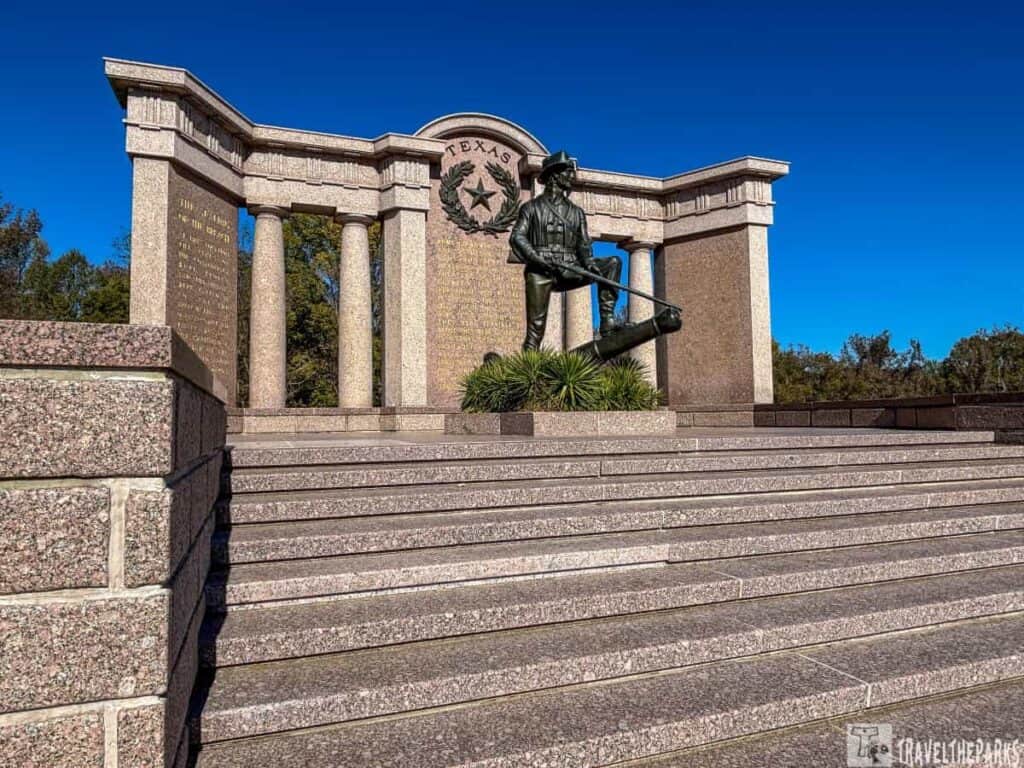
The Texas Memorial at the Railroad Redoubt in Vicksburg National Military Park stands as a testament to the bravery of Texas soldiers during the 1863 Siege of Vicksburg. This monument specifically honors the troops stationed at the pivotal Confederate defensive position known as the Railroad Redoubt, commemorating their sacrifices in this critical battle. The site serves as a lasting tribute, reminding visitors of Texas’s vital role in the conflict and the heavy price paid by these defenders of their cause.
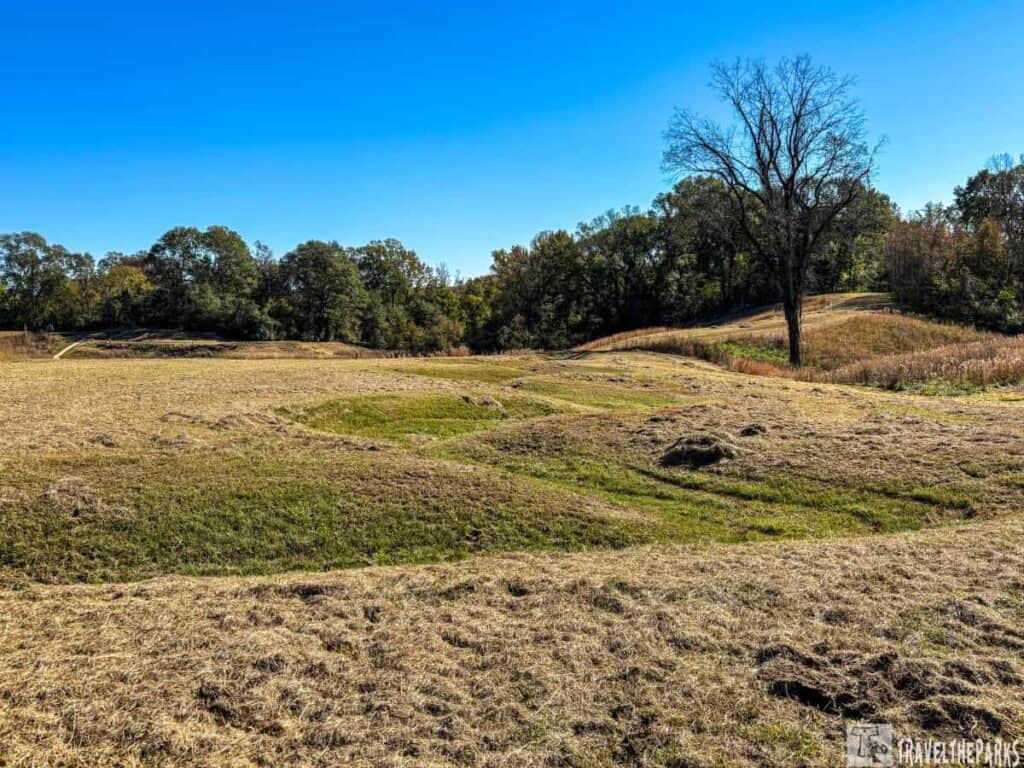
Station 14: Fort Garrott
Fort Garrott played a key role in defending against Union attacks. It housed artillery guns that fired at enemy forces, disrupting their plans and assaults. These guns protected vital infrastructure like railroads, supply lines, and access to the river. By targeting Union positions, Confederate forces aimed to fortify their defenses and maintain control over the city. The artillery’s strategic use was crucial in slowing down Union advances and securing essential resources for the Confederacy.

Station 15: Hovey’s Approach
Hovey’s Approach showcases the vital role Brigadier General Alvin P. Hovey and his Third Division played in the Siege of Vicksburg. As part of General Ulysses S. Grant’s forces, Hovey’s division helped apply pressure on Confederate defenses. This effort was key to the Union victory and the surrender of Vicksburg on July 4, 1863. The site features interpretive signs and historical markers that inform visitors about the siege’s tactics and the struggles of both sides. It’s an important stop for understanding how the Union army broke through Confederate lines, with Hovey’s division crucial in tightening the siege and forcing the eventual surrender.
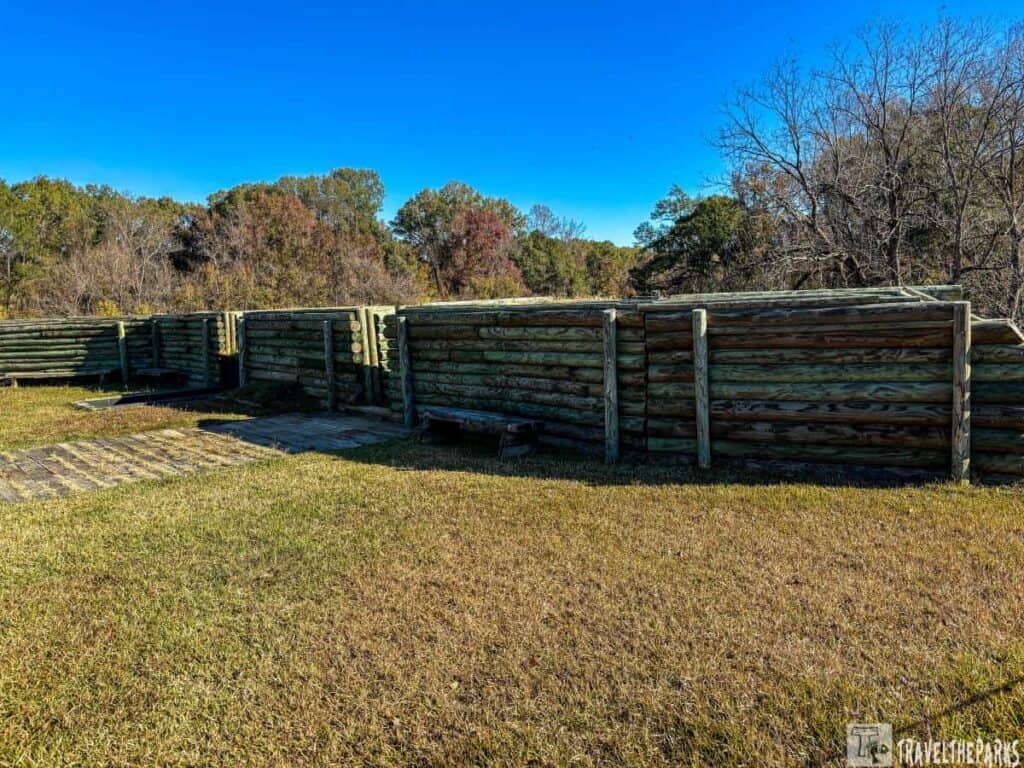
Final Thoughts: How to Experience Vicksburg’s Rich Civil War History
Vicksburg is a town where the past is not merely remembered, but actively lived. From the battlefield monuments to the historic sites and solemn cemeteries, the town offers an immersive experience into the Civil War era. Our road trip through the Vicksburg National Military Park was an unforgettable journey, where we not only learned about the events of the Siege of Vicksburg but also gained a deeper appreciation for the sacrifices made by soldiers and civilians alike. From here, we still have much to learn from Poverty Point to Natchez.
For history enthusiasts or those seeking a meaningful Civil War road trip, Vicksburg should be a top destination. Whether you follow the scenic drive through the national park or explore the town’s rich heritage, Vicksburg provides a powerful connection to America’s past – a trip you’ll never forget.
Have you ever been to Vicksburg National Military Park? If so, we’d love to hear about it. Leave your comments and questions below, and don’t worry-we will respond!


